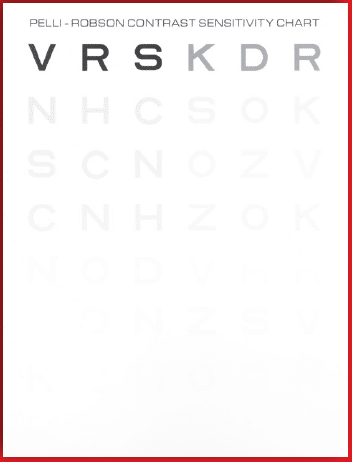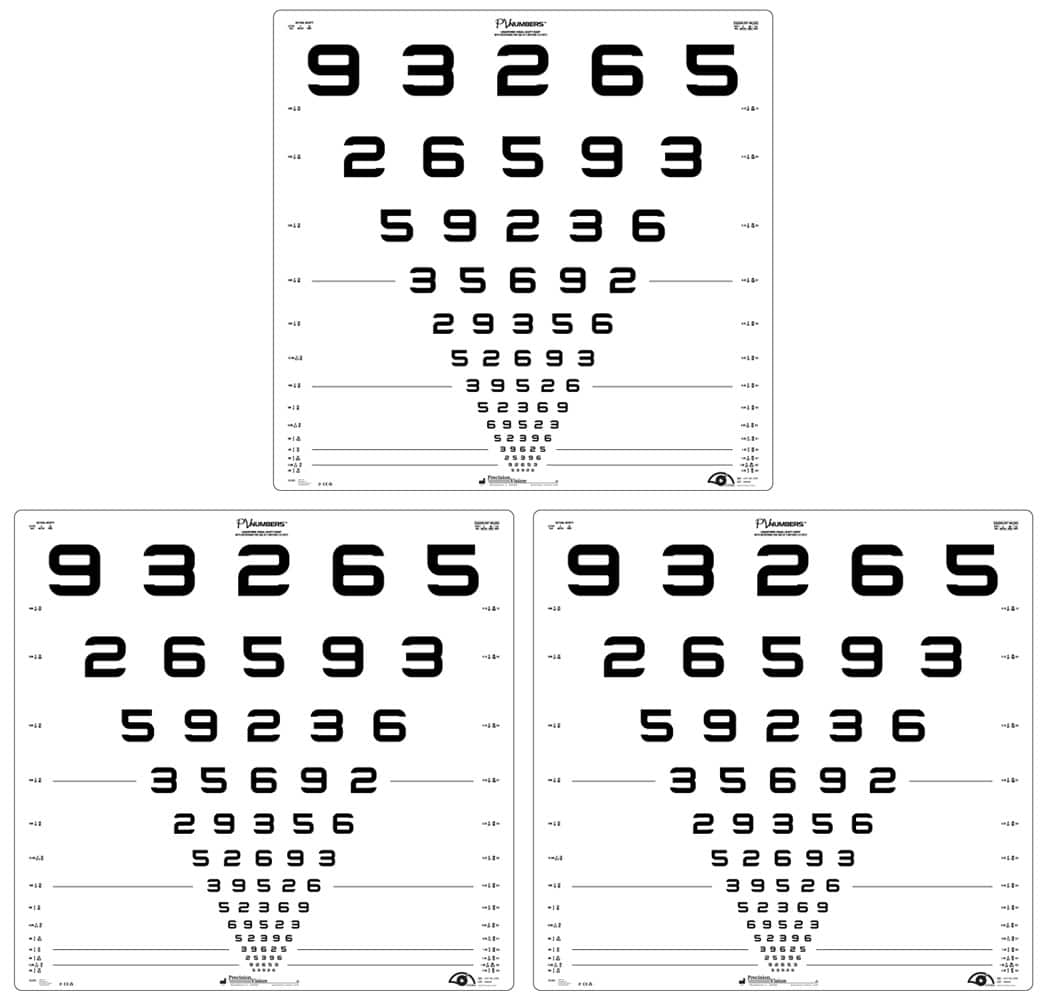
ETDRS Illuminator Cabinet New Lamp Filter Tube – Precision Vision
IN THE NEWS
Did you know? Over 100,000 oppressed ethnic people in Burma desperately need spectacles? Thousands of People in Burma suffer for lack of appropriate ophthalmic care, particularly the need for cataract surgery?
New Illumination option for the ETDRS Illuminator Cabinets™
Precision Vision announces a new accessory for its ETDRS Illuminator CabinetsTM (Cat. No. 2425) that will change the light level of from the standard 160 cd/m2 to 85 cd/m2.
The 85 cd/m2 level is achieved by sliding a calibrated filter tube (Cat. No 2427D85) over each existing fluorescent tube, as shown in the illustration. This solution applies to all of our existing as well as to all of our new ETDRS illuminator cabinets.
The filter tubes are guaranteed to maintain their properties for one year (defined as ten hours a day for 365 days). It takes only about one minute to install the filter tubes, which cost only $45.00 per cabinet.
Since most clinical trials replace bulbs after one year the replacement schedule for the bulb and filter are a perfect match. This is a terrific solution compared to replacing an existing cabinet or purchasing other brands that can cost $1,000.00 or more of additional expense to achieve the same light level.
Background
Since Precision Vision started to make the trans-illumination cabinets for the original ETDRS study, they have been calibrated for the internationally recommended brightness of 160 cd/m2.
The 160 cd/m2 level was recommended for general use in the 1984 Visual Acuity Measurement Standard [1] and repeated in subsequent standards [2,3,4,5,6]. These standards allow a 2x latitude in either direction, from 80 cd/m2 to 320 cd/m2 .
For normal eyes, increasing the chart luminance from 80 cd/m2 to 160 cd/m2 or from 160 cd/m2 to 320 cd/m2 increases the average visual acuity by about 1 letter on an ETDRS chart [7]. For clinical use this is negligible, since it is less than the normal test-retest variability (95% CI = 5 or 6 letters [8]).
Special studies
For special purpose studies other levels may be recommended.
When the emphasis is on retinal changes (as it was in the ETDRS or Early Treatment Diabetic Retinopathy Study), one may want to minimize refractive effects by keeping the pupil narrow. This can be helped by using a higher chart brightness. The original description of the Illuminator cabinets for the ETDRS [9] mentioned 345 cd/m2.
On the other hand, when the emphasis is on optical changes (as it is when testing intraocular lenses), one may want to optimize the detection of refractive effects by using a wide pupil, which can be helped by lowering the chart brightness. For lenses with concentric zones, a wide pupil also ensures that all lens zones are used. These are reasons IOL studies generally recommend a chart brightness at the lower end of the allowable range. The 2006 ISO standard, which applies specifically to testing of multifocal lenses [10] recommends 85 cd/m2 with an acceptable range from 80 cd/m2 to 160 cd/m2. Most FDA studies follow this recommendation.
Mesopic tests
In addition to now offering a choice between 160 cd/m2 and 85 cd/m2, Precision Vision continues to offer a chart filter (Cat. No. 2424) that reduces the chart luminance to 3 cd/m2 for mesopic measurements. When measuring at the mesopic level, special attention must be given to the room luminance, since peripheral light sources may affect the level of dark adaptation.1. Consilium Ophthalmologicum Universale (International Council of Ophthalmology), Visual Functions Committee. Visual acuity measurement standard (1984). (Also in Italian J. Ophth. II/I, 15, 1988 and Arq. Bras. Oftal. 51(5), 203,1988))
2. Committee on Vision, National Research Council, National Academy of Sciences. Recommended standard procedures for the clinical measurement and specification of visual acuity. Report of Working Group 39, Washington, DC, (1979). (Also in Advances in Ophthalmology 41, 103-148, 1980)
3. National Research Council, Committee on Vision. Measurement of Visual Field and Visual Acuity for Disability Determination. National Academy Press (1994).
4. National Research Council, Committee on Disability Determination for Individuals with Visual Impairments. Visual Impairments. National Academy Press (2002).
5. General-Purpose Clinical Visual Acuity Charts – ANSI Z80.21-2010 (Revision of ANSI Z80.21-1992). American National Standards Institute, Inc. (2010).
6. International Standards Organization. ISO 8596 – Ophthalmic optics, Visual acuity testing, Standard optotype and its presentation. (1994).
7. Sheedy JE. Bailey IL. Raasch TW. Visual acuity and chart luminance. Am. J. Optom. & Phys. Opt. 61(9):595-600. (1984).
8. Bailey IL et al. Visual Acuity: Variations with Optotypes. ARVO 2007-5514 (2007)
9. Ferris Fl, Sperduto RD. Standardized Illumination for Visual Acuity Testing in Clinical Research. Am J Ophth 94:97-98 (1982).
10. International Standards Organization. ISO 11079-9 – Ophthalmic implants, Intraocular lenses, Multifocal intraocular lenses. (2006).
PRODUCT PROFILE
85 cd/m2 Lamp Filter Tube
Set of two filter tubes for converting existing light levels on your ETDRS Illuminator Cabinet from the standard 160 cd/m2 to 85 cd/m2. Slides over the existing fluorescent lamps.
The filter tubes are guaranteed to maintain their properties for one year (defined as ten hours a day for 365 days). It takes only about one minute to install the filter tubes.
Replacement lamp for Cat. No. 2425. Order this for cabinets purchased after Nov 2008
Each Illuminator Cabinet uses 2 lamps and it is recommended that both lamps be replaced at the same time. Cabinets manufactured after November 2008 have lamps which include the fenestrated sleeve mounted onto each lamp. Order this for replacement in cabinets that do not have removable metal sleeve on the the lamps.
Large mesopic Filter for 2425 ETDRS Illuminator Cabinet
Placed in front of a vision test chart, this filter reduces normal cabinet light level down to 3 cd/m2 to challenge the patient’s vision at low light conditions. It is an easy and quick way to test low vision and low lighting problems and does not require moving to different rooms, calculating, or reorganizing the office. Mesopic filter is light, easy to use, and creates an accurate low vision test.
ETDRS Illuminator Cabinet
The first and still the world standard for retro illumination of vision testiing charts. Retro Illuminated cabinet is available in two colors for coordination with clinical settings. Illuminator cabinet is also available in different voltages for world wide use.
Product Features:
- National Eye Institute and FDA approved and recommended
- CE compliant
- Standardized uniform retro illumination for all 62 X 65 cm (24.5 X 25.5 in.) ETDRS charts
- Used for clinical trials or general office use
- Charts for several distances and optotypes in high and low contrast available
- Chart storage pocket in back
- Available in Traditional Beige, or New Cobalt Black
- Measures 63 X 65.5 X 17.8 cm (24.75 X 25.75 X 7 in.)
- Can be used with Adjustable Caster Base (CAT. NO. 2426)
- Can be wall-mounted
All translucent Contrast Sensitivity vision tests are highly recommended with this cabinet for accurate results. ETDRS Illumination cabinet is supported and approved by the NEI and FDA.
Effective May 12, 2008, Precision Vision® completed testing and documentation requirements and received CE approval for the ETDRS Illuminator Cabinets™ to be used in Hospitals, Clinics and Doctors offices throughout the European Union. All ETDRS Illuminator Cabinet™ accessories (charts, bases, lamps, and filters) are also CE compliant
SEE PV
Upcoming Meetings
Visit Precision Vision will be at the following meetings. If you are attending one and want to avoid unnecessary shipping costs and delays, we’d be happy to bring small portable products to the meeting. Place your order online or call us at 800-772-9211. Just be sure to tell us which meeting to hold the products for.

CONTACT US
Share Your Stories With Us!
Precision Vision® wants to hear your stories. Tell us how you are impacting the industry. Do you have an interesting story to share about a Precision Vision® product? Contact us and we may use it in a future newsletter.





